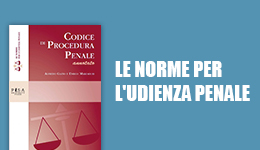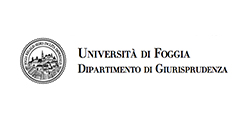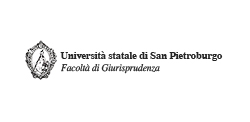Attentato a impianti di pubblica utilità, inafferrabilità dell’offesa e rischi di procedimentalizzazione del fatto. Alla ricerca del fatto attentante
Archivio Penale
© dell'autore 2020
Ricevuto: 20 May 2020
| Accettato: 23 June 2020
| Pubblicato: 24 June 2020
L’intero articolo è disponibile
Riassunto
L’art. 420 c.p. – come tutte le fattispecie costruite sulla falsariga dell’attentato - descrive un’illiceità a forma aperta, calibrata sulla “direzione verso un determinato evento”, che non precisa i caratteri e le modalità della condotta penalmente rilevante, né raccorda la pena alla capacità/idoneità dell’azione a realizzare in concreto un’offesa. Di fronte ad una tipicità aperta e ad un’offesa elastica, quanto evanescente, il giudice dispone di un’ampia discrezionalità che può capitalizzare, in tema di valutazione della prova, attraverso il principio del libero convincimento: operazione che si giova peraltro, dell’inserimento della fattispecie all’interno dei reati contro l’ordine pubblico. La difficoltà di ravvisare un nesso diretto fra il “fatto diretto a danneggiare o distruggere impianti di pubblica utilità” e la tutela dell’ordine pubblico ha infatti, stimolato nella giurisprudenza un’operazione di esegesi creativa, che ha fatto ritenere sempre sussistente - nella condotta attentante agli impianti di p. u. - per presunzione assoluta di legge, la lesione dell’ordine pubblico. Rispetto a questa impostazione sembra più corretta, l’adozione di una metodologia deduttiva che vada a circoscrivere l’area di punibilità dell’attentato, saggiando la idoneità della condotta sul doppio versante della tipicità e dell’offesa orientata al fatto di reato. Ciò significa recuperare i contorni di un fatto attentante, individuando, all’interno del 420 c.p. un profilo tipizzante in grado di selezionare un evento di pericolo concreto, quale nucleo costitutivo dell’offesa. A tale risultato si può addivenire valorizzando l’oggetto materiale del reato, quale punto di riferimento empirico della condotta e, dunque, appiglio cui ancorare il processo di concretizzazione dell’evento stesso. Rapportato ad una situazione oggettiva (Zustand) in itinere, il disvalore d’azione può esser convertito in disvalore di evento: il fatto diretto a - dovrà cioè esser letto come fatto idoneo a – cagionare un evento di danneggiamento e distruzione. Il riposizionamento dell’art. 420 c.p. nell’alveo del pericolo concreto, piuttosto che in quello presunto, è del resto maggiormente in linea con l’epistemologia garantista, che vede nel processo un luogo di accertamento dei fatti, piuttosto che di costruzione di responsabilità presuntive.
Attack on public utility plants, elusiveness of the offense e risks of proceduralisation of the fact. In search of the attacking fact.
Like all cases built along the lines of the attack crime, the attack on public utility plants describes an open-form illegality, calibrated on the "direction towards a certain event". The offense does not specify the characters and methods of the criminally relevant action, does not link the penalty to the ability / suitability of the action to actually carry out an offense.
This open and elastic typicality, as evanescent, allows the judge a wide discretion, which can be capitalized, in terms of evaluation of the evidence, through the principle of free conviction: an operation that benefits from the inclusion of the case within the crimes against public order.
The difficulty of recognizing a direct link between the "fact aimed at damaging or destroying public utility systems" and the protection of public order has, on the other hand, stimulated an operation of creative exegesis in the jurisprudence, which has always led to the existence - in the conduct attacking - by absolute presumption of law, the violation of public order. More correct, starting from a deductive methodology, it seems the construction of a type of attack that circumscribes the area of punishment, testing the suitability of the conduct on the double side of typicality and offense oriented to the fact. This means recovering the outlines of an attacking event, identifying, within 420 c.p. a typing profile capable of selecting a concrete danger event, as the core of the offense.
This result can be achieved by enhancing the material object of the crime, as an empirical point of reference for the conduct and, therefore, a support to which the process of concretization of the event itself can be anchored. Compared to an objective situation in itinere, the negative value of action can be converted into negative value of event: the fact directed at - that is, it must be read as a fact suitable for - causing an event of damage and destruction. The repositioning of art. 420 c.p. in the realm of concrete danger, rather than in the alleged one, it is more in line with the guarantee epistemology, which sees in the process a place of ascertaining the facts, rather than building presumptive responsibilities.
Percorso di valutazione
Peer reviewed. Certificazione della qualità











